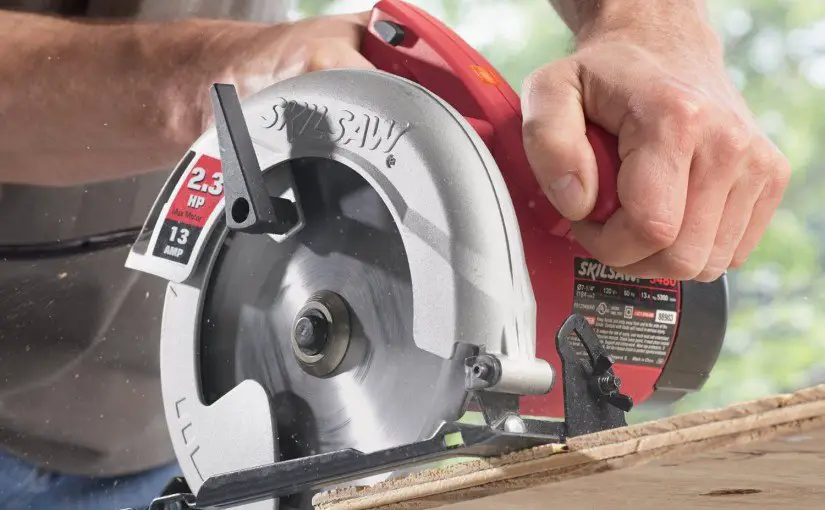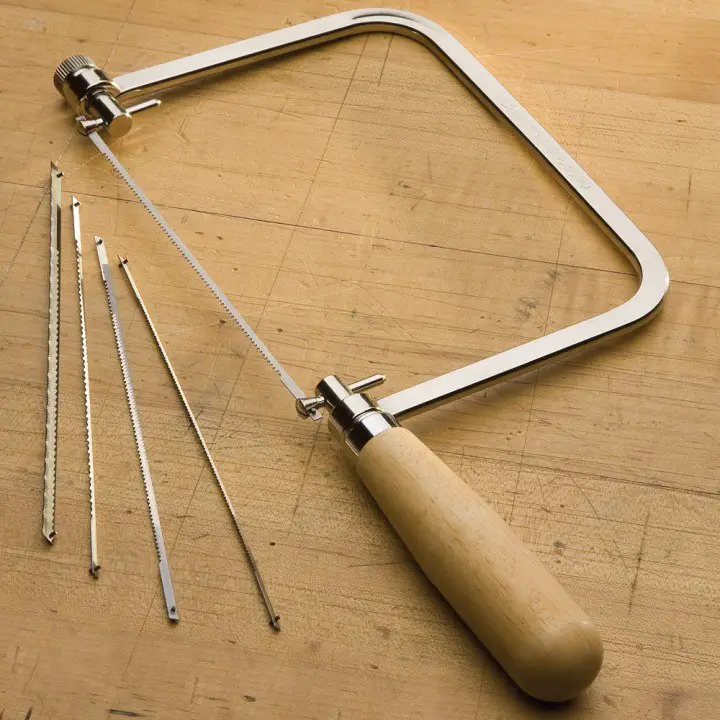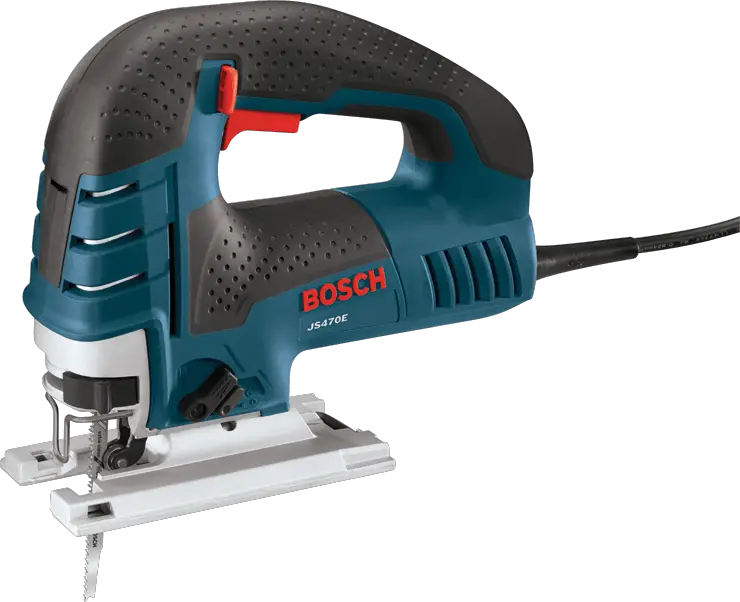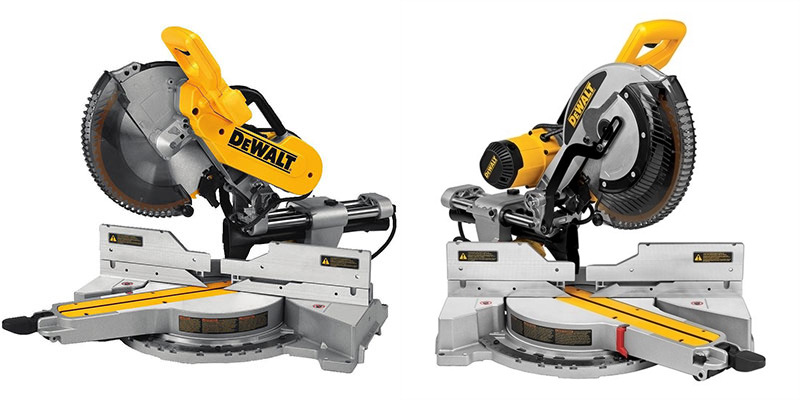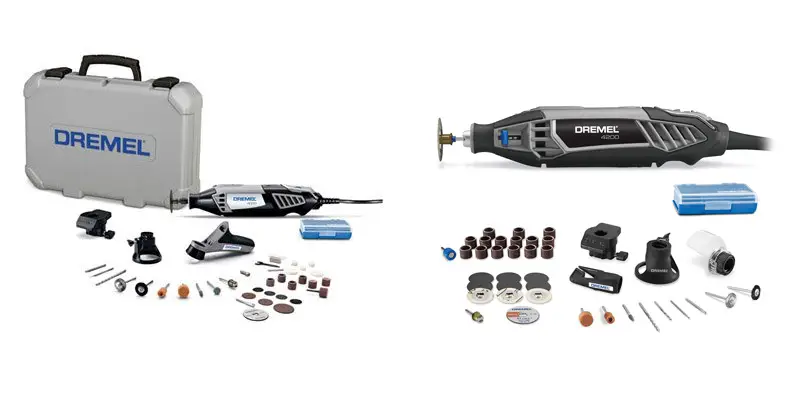Saws
A Guide To The Different Types Of Saw
I’ve put together a list of the most common types of saw, along with their common use cases; this should help you to decide what sort of saw you need for the job you want to do.
From wikipedia:
A saw is a tool consisting of a tough blade, wire, or chain with a hard toothed edge. It is used to cut through material, most often wood. The cut is made by placing the toothed edge against the material and moving it forcefully forth and less forcefully back or continuously forward. This force may be applied by hand, or powered by steam,water, electricity or other power source.
Here is the list of the most common types of saw
Hand Tools
Back Saw
The technical name for a saw that is stiffened along the back edge of the blade, which is more commonly referred to as a tenon saw as their typical use is for cutting tenons. The blade is usually relatively short. For particularly fine work it is called a dovetail saw which has very fine teeth at 22-24 points.
Coping Saw
A coping saw is used for cutting tight curves or shapes in thin wood. The blade cuts on the pull stroke but as it can be removed you can reverse it to cut on the push.
Cross-Cut Saw
Used to cut across the grain; the teeth are bevel-filed at an angle other than 90 degrees and pitched at 75-80 degrees. Tooth size varies from 6 to 12 points.
Dovetail Saw
A type of back saw with very fine teeth between 22-24 points.
Drywall Saw
Typically used for cutting holes in drywall; this saw has a pointed end which is stabbed into the material and then cuts in a regular manner. Has coarse teeth which cuts quickly but leaves a ragged edge.
Folding Saw
A folding saw is usually used in the outdoors for trimming tree branches. They are extremely easy to carry in a backpack as the saw blade is folded back into the handle. They are great to bring on a camping trip. Some are capable of cutting some fairly thick branches despite looking like a large pocket knife.
Flush Cut Saw
Has a very thin, flexible blade with fine teeth which cuts on the pull stroke. The blade flexes so that you can cut dowels and plugs flush with the surface without damaging it.
Fret Saw
Similar to a coping saw but with a much deeper throat.
Hacksaw
Has a thin blade with very fine teeth held under tension in a steel frame. Typically used for cutting metal.
Japanese Saw
This type of saw has a thinner blade which cuts on the pull stroke and leaves a narrow kerf.
Panel Saw
This is simply a small version of a crosscut saw with smaller teeth at 10-12 points. Its teeth are pitched and beveled the same as the crosscut saw. It is used for cutting thinner wood.
Ripsaw
Used to cut timber to the correct width, along the grain. Some ripsaws have incremental teeth; which is where the teeth become larger the closer they are to the handle. Generally the front of the saw’s teeth are at right angles to the blade; and are pitched at 85-90 degrees. These saws are unusual these days as timber is widely available in common widths. If you are ever needing to rip cut timber a crosscut saw will do the job just fine.
Tenon Saw
A more common name for a back saw; which is the technical name for a saw that is stiffened along the back edge of the blade.
Veneer Saw
A small, double edged saw which is used for cutting thin veneers from hardwood.
Power Tools
Band Saw
The blade is a continuous band of thin metal with teeth along one edge. A bandsaw comes in three types; vertical, horizontal and portable. A vertical bandsaw (pictured) has the blade fixed vertically; the material is moved horizontally and can be rotated freely to cut complex patterns. To use a horizontal bandsaw, the material is clamped in place and then the horizontal blade is lowered onto it using gravity to make the cut. These are typically used for ripping timber to length. A portable saw is used for the same purpose as its horizontal cousin, but is not fixed in place.
Chainsaw
A chainsaw consists of teeth fixed to a rotating chain running along a guide bar. They are typically used for felling trees and cutting logs.
Circular Saw
Consists of a spinning circular blade attached to hand grips. Very effective for ripping long pieces of wood as well as cross cuts. Reasonably accurate when used in conjunction with a fence.
Hole Saw
Also known as a hole cutter, this is a ring shaped saw blade which is fitted to a drill in order to cut a circular hole in a (usually) thin workpiece.
Jigsaw
Also known as a bayonet or sabre saw. A jigsaw has a reciprocating saw blade attached to an electric motor. It can cut patterns similarly to a band saw, with the advantage that it is not restricted in how deep it can cut, however the blade is not as well supported and so can twist easily causing it to be less precise.
Miter Saw
Consists of a spinning circular blade which is lowered onto the workpiece, which is usually clamped in place against a fence. The angle of the blade can be changed relative to the fixed fence in order to make an angled cross-cut.
Power Coping Saw
Some people will refer to a scroll saw as a power coping saw due to how similar the blades and the cuts that you can make from them. The hand coping saw is more easy to maneuver and cheaper.
Radial Arm Saw
A precursor to the miter saw, this has a circular saw mounted on a sliding horizontal arm. It is used to make cross cuts in wider material than a miter saw can usually cope with.
Reciprocating Saw
Similar to a jigsaw this has a thicker reciprocating blade mounted in-line with the handle. This is a very versatile saw which can be used for many applications by simply swapping out the blade.
Scroll Saw
A scroll saw is a small, thin-bladed saw used for cutting intricate curves and patterns in thin material in cases where a coping saw or jigsaw cannot be used.
Table Saw
One of the definitive tools for a woodworking shop. This consists of a circular saw blade driven by an electric motor, mounted partially protruding in a table. This tool is highly effective, and accurate, for both cross and rip cuts; as well as mitre cuts as the workpiece can be presented to the blade at any angle and bevel cuts as the vertical angle of the blade can be adjusted.
Additionally, this is not an exhaustive list of all possible types of saw; however, most of the other types of saw are variations on one of the types shown here.

